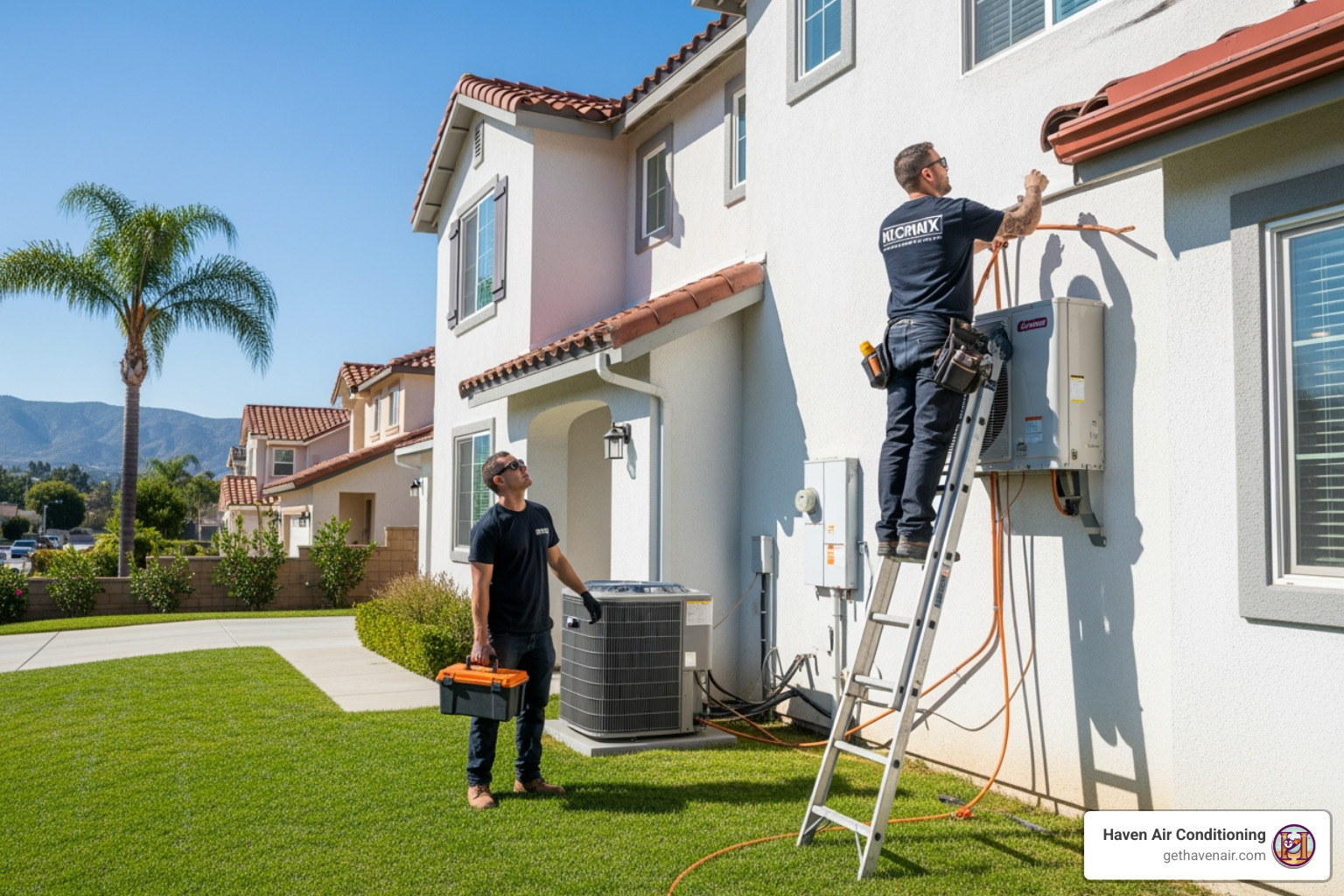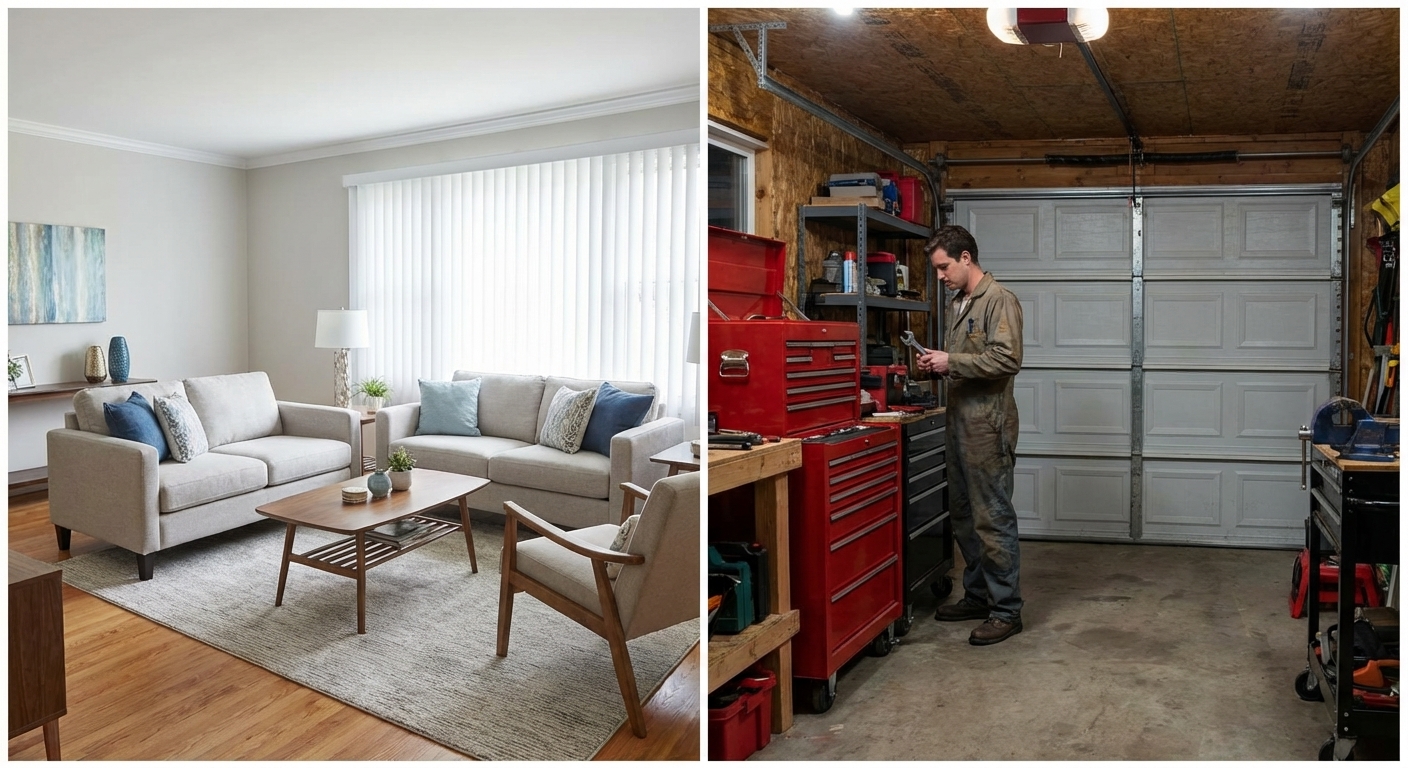When the heat peaks in Villa Park, an underperforming air conditioner can quickly turn a comfortable home into a frustrating problem. Long days and warm nights push AC systems to work harder, and without regular inspection, small issues can snowball into serious breakdowns. That is why a full check before or during the summer matters. Catching changes in performance early can help avoid mid-season failures and larger repair bills down the line.
Whether it is an unexpected shot of warm air from the vents or a strange sound when the system kicks on, these signs often mean something is off internally. A full system inspection looks beyond the surface and checks the parts that make everything run efficiently. From electrical safety to cooling output, there are several parts of the AC system that deserve attention during a summer maintenance visit.
Checking the Thermostat and Controls
If your home does not cool correctly or takes too long to reach the set temperature, the issue may start with the thermostat. Even if the air conditioning unit works, a faulty thermostat can misread indoor temperatures or fail to send the right signals to the system. Sometimes the thermostat is just a few degrees off, but that can still increase your energy use and reduce comfort.
Our technicians check to make sure the thermostat is level, calibrated correctly, and communicating as it should. If there is a schedule programmed, it is reviewed and adjusted based on your daily routines. Whether it is an older model or a newer smart thermostat, reliable controls are key to maintaining consistent comfort.
We also make sure every part of the system starts and stops the way it should. For example, if the compressor does not respond immediately or the fan stays running longer than needed, that can point to issues behind the scenes. Accurate response to thermostat changes is part of what makes your cooling system dependable during long summer days.
Inspecting the Air Filter and Ductwork
Next up are airflow and cleanliness. That starts with the air filter and moves through the ductwork. A dirty or clogged air filter reduces airflow, puts stress on the blower motor, and lowers AC performance. It also forces the system to work harder to reach the set temperature. For homeowners, this can mean warmer rooms, longer cooling cycles, and more dust indoors.
Our technicians always begin by checking the current filter. If it is visibly dirty or overdue for replacement, it is swapped out with the correct size and rating. A clean filter helps restore proper airflow and improves energy use right away.
After that, we take a close look at the duct system:
– Check for visible debris inside return or supply vents
– Look for signs of dust buildup or air leaks in attic or crawlspace duct runs
– Inspect insulation around ducts for damage or gaps
An example: One homeowner in Villa Park noticed cold air was not reaching one side of their home. When our professionals took a closer look, the duct serving that space had partially collapsed due to attic work from a previous job. Once we replaced and sealed the duct correctly, airflow improved instantly.
Even minor gaps or crush points along ductwork can reduce efficiency and comfort. Regular inspections keep air moving properly so the system does not overwork to compensate.
Examining Electrical Connections and Components
Air conditioning systems depend on safe and well-connected electrical components to run without interruption. Worn wiring, loose screws, or overheating parts can cause short cycling, tripped circuits, or total system failure during hotter days when demand is high.
Our technicians check every main connection point. This includes tightening terminals, inspecting the contactor and capacitor for wear or bulging, and measuring voltage across different parts. Any discoloration, burnt smell, or loose wiring gets addressed right away to prevent fire hazards or shutdowns.
We also test the relay switches and control board responses to make sure the system is operating in response to settings and not lagging or misfiring. If needed, we may recommend a replacement part before it becomes a bigger failure issue.
By examining all electrical components, we can prevent emergency outages and keep your cooling consistent all season long.
Assessing Refrigerant Levels and Coils
A common issue that causes weak cooling is improper refrigerant levels, and that is one of the first things our technicians check. When refrigerant gets too low, the system has to work longer to hit the temperature setting. This extra strain can lead to overheating, poor performance, and higher energy bills. On the other hand, too much refrigerant can also be a problem, putting pressure on the compressor and shortening its lifespan.
Technicians use specialized tools to measure the system’s refrigerant pressure. If there is a mismatch between refrigerant levels and manufacturer specs, it points to either a leak or improper charging. Low refrigerant often shows up as ice forming on refrigerant lines or evaporator coils. If that ice melts, it can create water where it should not be, like your ceiling or floor.
After checking refrigerant levels, the coils come next. Both the indoor evaporator coil and the outdoor condenser coil need to stay clean to move heat in and out of the system effectively. If they have built up a coating of dirt or dust, heat transfer slows down, and parts like the compressor work harder than necessary.
In one case in Villa Park, a homeowner complained that the AC was constantly running without cooling much. Our technician found that the outdoor coil was almost completely clogged with debris from nearby landscaping. After a full cleaning, the AC cooled properly again, and the system’s runtime dropped significantly.
Seasonal inspections of refrigerant and coil conditions help avoid these types of problems. This keeps the AC unit operating at peak efficiency and prevents longer-term wear on expensive parts like compressors and fans.
Clearing and Testing the Condensate Drain Line
When air conditioners run, they pull moisture from indoor air to help cool the space. That moisture collects in the system’s drain pan and flows out through the condensate drain line. If that line gets blocked, water can back up and leak into surrounding areas, leaving stains or encouraging mold growth.
Villa Park homes with higher humidity or older AC units are more likely to deal with clogged drain lines. Technicians usually test by pouring water into the drain pan and making sure it flows freely through the pipe. If there is any slowdown or backup, it could be a sign of algae, dirt, or mineral buildup in the drain.
A blocked drain line can cause:
– Water leaking from the indoor unit
– AC shutting off unexpectedly due to safety switches
– Musty smells coming from vents or near the indoor unit
– Increased humidity inside the house
Most of the time, simple adjustments or a clearing tool can remove the clog. It is also common for our technicians to recommend drain line treatments that stop biological buildup from forming. These cleanings should be done regularly, especially during the summer when systems remove the most moisture from the air.
Ignoring this small part of the system can lead to bigger problems. Routine drain checks help prevent water damage, slow performance, and mold issues that are harder to fix later.
Ensuring Efficient AC Use Through the Summer
Once all the major system components have been inspected—thermostat, filters, ductwork, electrical parts, refrigerant, coils, and drain lines—it is about making sure they keep working together. Catching one weak link may save your system from a chain reaction leading to failure when it is hottest outside.
Villa Park summers are long, and cooling systems do not get much of a break. Running an unmaintained AC daily adds stress. That is why inspections are not just about fixing today’s problem but preventing next week’s or next month’s.
One overlooked issue can lead to larger repairs, like replacing motors, sensors, or entire compressors. That is why homeowners in Villa Park benefit from full AC maintenance at least once each season. It is a smart way to avoid high utility bills, sudden breakdowns, or poor indoor air quality.
When everything is running correctly, your AC should be quiet between cycles, fast to cool your home, and steady in its output. If anything feels off—whether it is a whine in the fan or a room that always feels muggy—getting it diagnosed before it grows into something worse is always the better option.
Performing a full inspection helps your system get through the hottest days with less stress. It also keeps you and your family comfortable without the worry that the next heatwave will knock your cooling out of commission. Regular care helps turn your AC from a possible problem into something you do not have to think about.
When your cooling system struggles to keep up with Villa Park summers, regular AC maintenance in Villa Park can prevent minor issues from turning into costly repairs and help keep indoor temperatures consistent. Our professionals at Haven Air Conditioning provide practical solutions that support system efficiency and reduce unexpected problems. For a quick estimate or to book a service visit, please contact us today.





